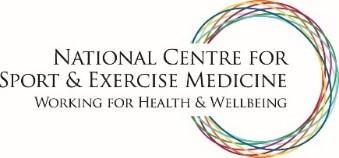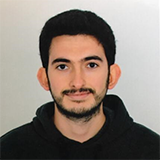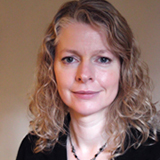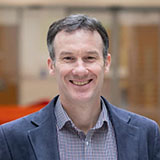Effects of a Resistance Exercise Programme on Risk of Osteoporosis and Osteoarthritis in Females (REPROOF)
Loughborough University is conducting research into the possible benefits of resistance exercise on bone and joint health and physical function in postmenopausal women.
This research will help us to understand what types of exercise may be best for preventing osteoporosis (brittle bones) and osteoarthritis (painful joints).
Previous research undertaken at Loughborough University has found that brief hopping exercises can improve bone strength at the hip and so may reduce the risk of hip fracture.
We now want to find out the best way to increase bone density at the spine, as well as the hip. We also want to strengthen the muscles and joints of the leg and so improve physical function.



How can you take part?
We are looking for healthy women aged 50 to 70, who are at least five years since menopause (or last using hormonal contraception or hormone replacement therapy).
To check if you may be eligible to join the trial, please fill out our screening questionnaire. Based on your answers, we will contact you about your eligibility and what are the next steps.
You will be asked to come to the university for measurements at the beginning, middle and end of the eight-month study. We will ask most volunteers to take up exercise, whilst some carry on as normal as a control group. Exercisers will be asked to come to exercise classes twice a week during the study.
The benefits of participating
If you are in an exercise group, you will have seven months of individualised exercise training, with other similar people.
- You may notice some benefits of exercise, including becoming stronger and more toned, having better posture, etc.
- Resistance exercise is known to have a number of other health benefits, including increasing bone density, reducing risk of cardiovascular disease, diabetes, improving mental health etc.
- These exercise sessions and exercise programmes will increase your knowledge about how to perform the resistance exercise. Furthermore, hopefully, you will gain exercise habits and increase your quality of life with greater knowledge and experience.
If you are in a control group, you will be prescribed a training plan at the end of the research.
All participants will receive information on the results of the different measurements. You will also be a part of research to increase our knowledge for on what types of exercise may reduce risk of osteoporosis or osteoarthritis.
Measurement sessions
You will be invited to eight measurement sessions: three at the beginning, two at the 16th week, and three at the end of the trial (32nd week).
Each visit may last up to two hours. Sessions will be arranged at a mutually convenient time as far as possible, although the availability of the MRI scanner is more limited so we can be less flexible with this appointment. This measurement will be done at the beginning and end of the study only.
Measurements will include:
- Questionnaires about your background, medical history, physical activity level, pain, calcium intake and any metal that may affect MRI scans.
- Dual Energy X-ray absorptiometry (DXA) scan to measure bone density. Femur, spine, forearm and whole-body bone density will be measured. This will give information us about your current bone health and risk of osteoporotic fracture.
- Peripheral Quantitative Computed Tomography (pQCT) scan to measure the 3D structure of the bone in the forearm and lower leg.
- MRI scan of the knee joint and thigh muscles. This will assess the quality of the cartilage in the knee, which has been linked to risk of future osteoarthritis, and the size of the thigh muscles. This measurement will be done at the beginning and end of the study only.
- Muscle function measurements: Maximal muscle strength will be assessed with two exercises: the hack squat and calf raises. In addition, we will measure how quickly you can move a range of weights ranging from light to heavier.
- Blood and urine sample to examine changes in the metabolism of bone and cartilage. One small tube (approximately one tablespoon) will be taken from a vein in your arm and you will be asked to collect a small sample of urine in a container that we will provide.
- Some simple tests of physical function, e.g. how quickly you walk a 4-metre distance and balance (e.g. how still you can stand).
Exercise sessions
Two different exercise groups are needed so the study team can see any difference in the musculoskeletal health of those who exercised ballistically compared to those who exercise conventionally (high-load low-velocity training).
If you are in an exercise group you will also be asked to attend exercise sessions twice a week for 30 weeks. Each visit will take approximately one hour including approximately 30-40 minutes of exercise, warm up and rest breaks.
Travel and reimbursement
All visits for both groups will be at the National Centre for Sport and Exercise Medicine (NCSEM) clinical facilities and/or research lab.
We will make a payment of £3 per visit to cover any travel costs. This may amount to a maximum of £204 for people in exercise groups, or £24 for people in the control group who will make fewer visits. These expenses will be paid bi-monthly.
More information
For more information about the study and the benefits of taking part, please download our REPROOF Participant Information Sheet, or contact our Team by phoning or texting: 07543 302354.
Contact our team

Caliskan’s PhD project focuses on comparing different exercise modalities on the risk factors for osteoporosis and osteoarthritis, as well as pain and physical function in postmenopausal women

Dr Brooke-Wavell’s current research examines the influence of exercise and other lifestyle factors on risk factors for osteoporosis, falls, physical function and related health outcomes.

Jonathan‘s teaching, research and consultancy work is focused on Neuromuscular Performance and the underlying physiology and biomechanics.